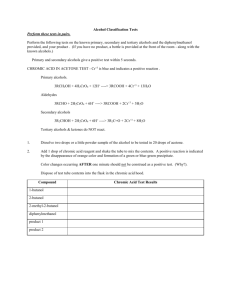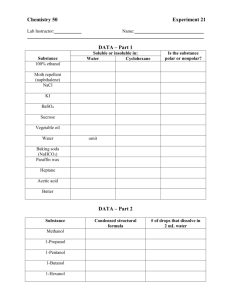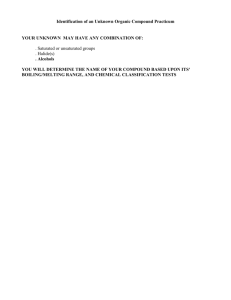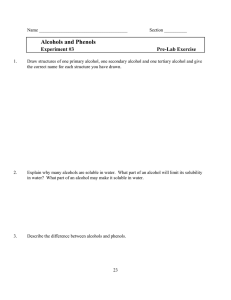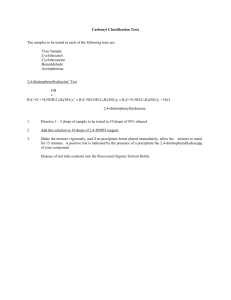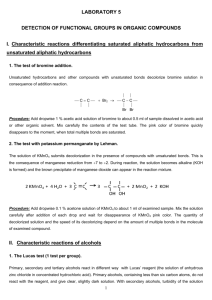3-2 Lab physical properties alcohols
advertisement
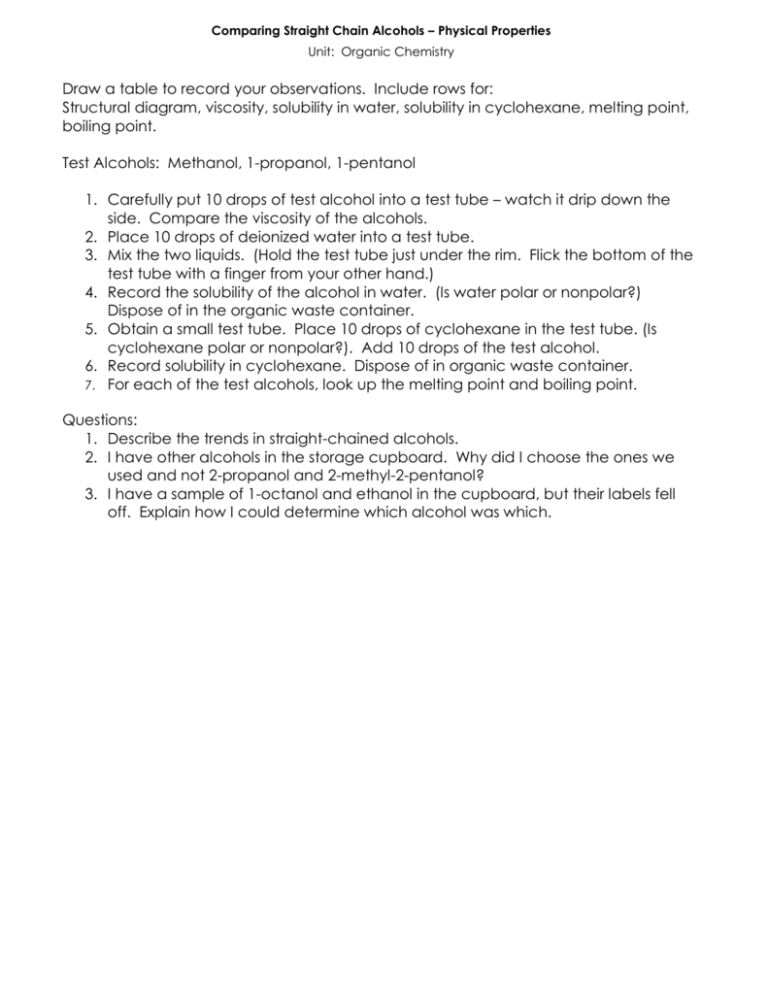
Comparing Straight Chain Alcohols – Physical Properties Unit: Organic Chemistry Draw a table to record your observations. Include rows for: Structural diagram, viscosity, solubility in water, solubility in cyclohexane, melting point, boiling point. Test Alcohols: Methanol, 1-propanol, 1-pentanol 1. Carefully put 10 drops of test alcohol into a test tube – watch it drip down the side. Compare the viscosity of the alcohols. 2. Place 10 drops of deionized water into a test tube. 3. Mix the two liquids. (Hold the test tube just under the rim. Flick the bottom of the test tube with a finger from your other hand.) 4. Record the solubility of the alcohol in water. (Is water polar or nonpolar?) Dispose of in the organic waste container. 5. Obtain a small test tube. Place 10 drops of cyclohexane in the test tube. (Is cyclohexane polar or nonpolar?). Add 10 drops of the test alcohol. 6. Record solubility in cyclohexane. Dispose of in organic waste container. 7. For each of the test alcohols, look up the melting point and boiling point. Questions: 1. Describe the trends in straight-chained alcohols. 2. I have other alcohols in the storage cupboard. Why did I choose the ones we used and not 2-propanol and 2-methyl-2-pentanol? 3. I have a sample of 1-octanol and ethanol in the cupboard, but their labels fell off. Explain how I could determine which alcohol was which.
